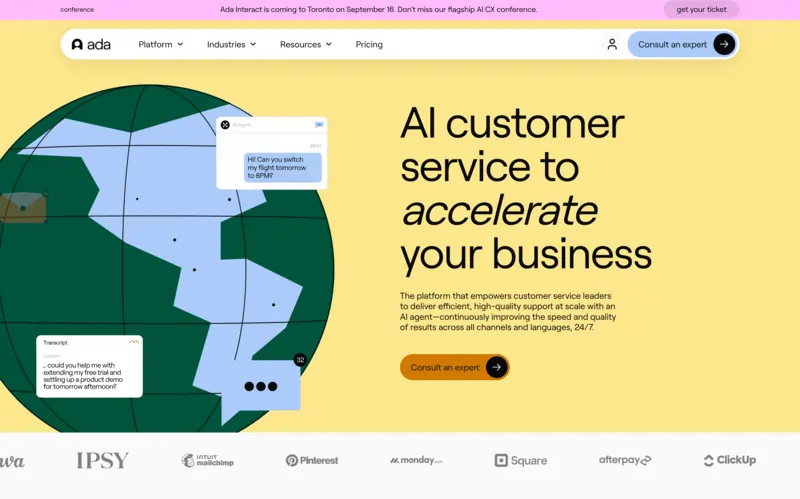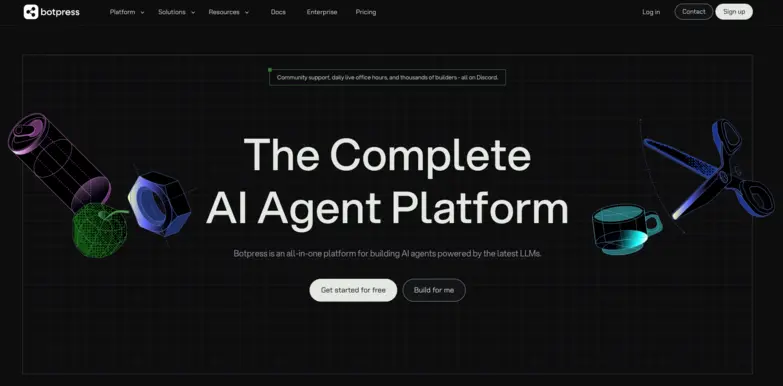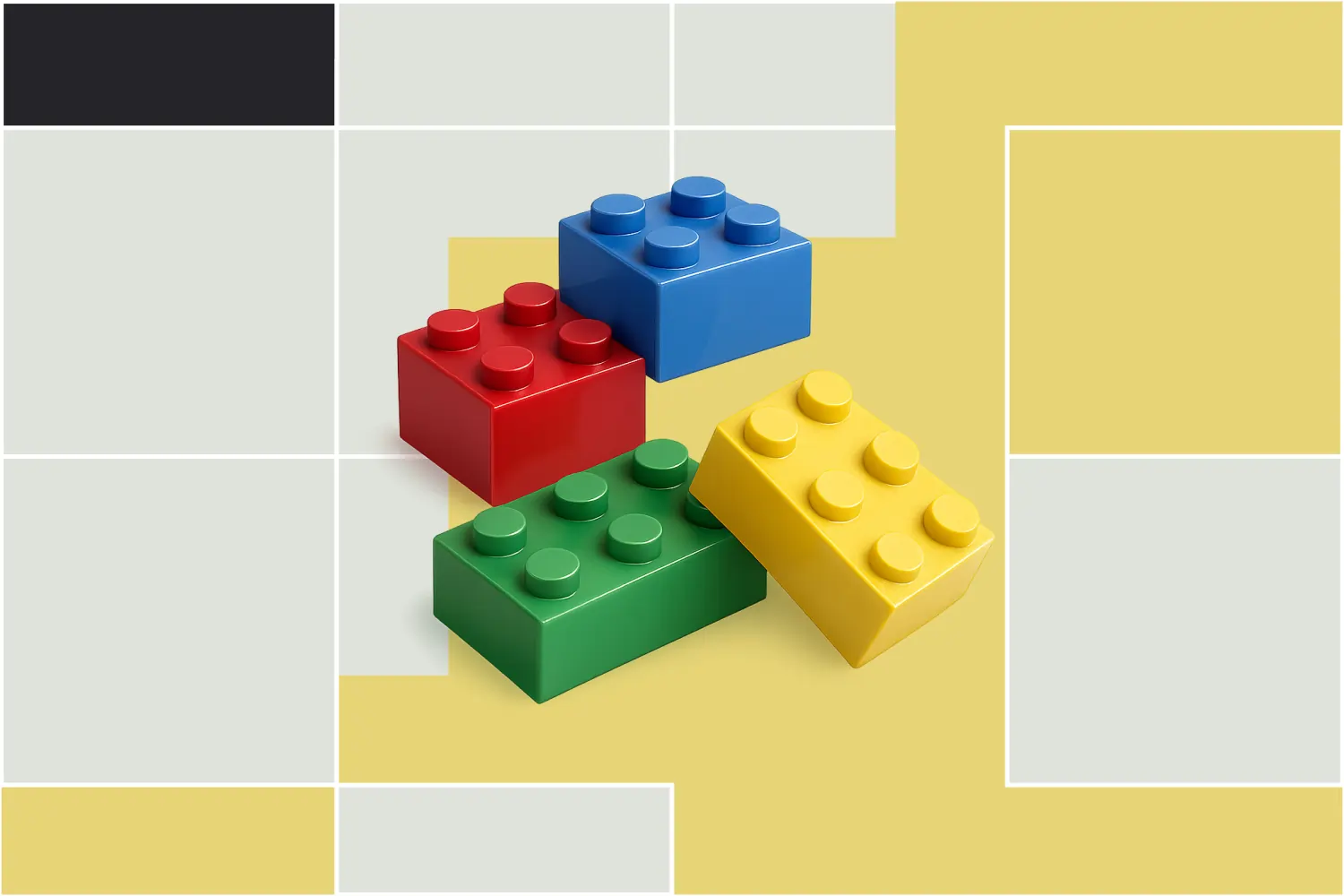Businesses today expect more from AI chatbots than canned responses. You want a tool that can manage conversations, automate tasks, and scale with your growth.
Ada and Botpress are both popular platforms for building AI chatbots, but they take different paths in how they work and what they offer.
Trying to figure out which one belongs in your tech stack? Here’s our breakdown of Ada vs. Botpress.
Quick Overview: Ada vs. Botpress
TL;DR: Ada is a good fit for teams that need a fast, out-of-the-box customer service chatbot and are ready to invest soooo much money, gotta mention it. Botpress suits teams that want more customization and control over their customer service automation.
Ada is a no-code platform to automate customer support. It’s ideal for large enterprise teams that need a chatbot to handle common questions and hand conversations off to human agents when needed, all while working smoothly across web, mobile, and social channels.

Botpress is a conversational AI chatbot platform for teams who want more than just a customer service chatbot. Users can build advanced AI agents that resolve customer issues, instead of just escalating them.

With integrations into legacy systems, bespoke conversational logic, and advanced retrieval-augmented generation (RAG), Botpress enables the ability to build agents that handle complex use cases in customer support.
Feature-By-Feature Comparison
Ada vs. Botpress Pricing Comparison
Ada uses a performance-based pricing model, charging based on the number of customer inquiries the AI resolves. The annual cost for Ada is estimated to range from $1,000 to $70,000, depending on conversation volume and features. This pricing model makes Ada ideal for large organizations with high support volumes and complex automation needs. For precise rates, contact Ada directly.
Botpress, by contrast, offers transparent pricing tiers that make it more accessible for businesses of all sizes:
Botpress also offers a Pay-As-You-Go option, which lets teams pay only for the AI usage they consume, making Botpress a cost-effective option for businesses.
Ultimately, Ada is a strong choice for large businesses looking for pricing tied to performance, while Botpress appeals to teams looking for predictable costs.
Integration Capabilities
TL;DR: Ada offers 19 prebuilt integrations focused on popular customer support tools. Botpress offers 190+ integrations across platforms and makes it easier to build custom integrations when needed.
Both Ada and Botpress offer ways to connect AI chatbots to other systems.
Ada comes with 19 pre-built integrations, focusing mainly on customer support platforms like Salesforce, Zendesk, and Gorgias. For example, Ada users can link their chatbot to Salesforce to surface knowledge base articles or route conversations to live agents, helping teams handle customer inquiries faster.
Botpress offers 190+ pre-built integrations and makes it easy to build custom connections. Businesses using Botpress can integrate with tools like HubSpot, Salesforce, and Zendesk to verify customer details through API calls, update CRM records, or trigger complex workflows across multiple systems.
Use Cases
TL;DR: Whereas Ada focuses only on customer service, Botpress can be used for any business process automation.
Ada’s strengths lie in helping businesses automate support conversations and smoothly hand off chats to live agents. Businesses often choose Ada when they want a dedicated solution for improving customer support and they don’t plan on expanding.
Botpress is built to expand across a wide range of business applications, like customer service, lead generation, and internal processes. Many organizations start with a single chatbot — for example, in customer service — and then extend their AI solution to areas such as HR support, IT assistance, or sales automation, creating a unified AI ecosystem.
Security Features
Knowledge Capabilities
TL;DR: Ada focuses on simple chatbot setup using existing support content. Botpress offers more flexibility, connecting to diverse data sources and APIs.
Ada is focused on making customer support automation easy. Businesses can connect Ada to existing knowledge bases in tools like Zendesk or Salesforce so a chatbot can answer common questions accurately.
Ada also offers a Knowledge API, which lets teams add custom information that the bot can pull from during chats. It’s a great choice if teams want a chatbot that relies on predefined content and integrates smoothly with popular support platforms.
Botpress can also automate customer support using FAQs and knowledge bases. But Botpress goes further by letting teams integrate all kinds of data, from structured tables and JSON files to unstructured text.
Botpress’ system includes an advanced in-house RAG (Retrieval-Augmented Generation) mechanism that enables bots to search through extensive data sets and generate personalized responses in real-time. It also supports API integrations, allowing bots to access live external data, which enhances contextual understanding and enables sophisticated conversational logic.
Customization & Flexibility
TL;DR: For customization, Botpress stands out as one of the most flexible options on the market, giving teams full control over how their chatbots behave and integrate with other systems. Ada offers only frontend customization.
Ada primarily offers customization for the frontend appearance of a chatbot such as branding. However, Ada does not support adding custom backend logic, writing code, or building advanced integrations beyond what’s possible through its visual tools.
.webp)
Botpress, on the other hand, offers unmatched flexibility for customization. Botpress goes further by giving developers the option to write custom code in JavaScript or TypeScript, call external APIs, run scripts, and create more advanced logic and integrations. This makes Botpress the best option for teams who want the freedom to build highly customized experiences.
.webp)
Memory
TL;DR: Ada doesn’t offer persistent memory beyond single conversations, but Botpress chatbots can remember users across sessions – including carrying context over time.
Ada can capture and use information collected during a single conversation. For example, remembering a user’s order number or preferences within that chat session. However, Ada does not have built-in persistent memory to recall user details across multiple sessions. For any memory beyond a single chat, businesses would need to connect Ada to external systems (like a CRM) via APIs and fetch user data at the start of each conversation.
Botpress offers built-in memory capabilities. Botpress can store and retrieve information about users across sessions, allowing chatbots to recognize returning users, remember past conversations, and personalize interactions over time.
Botpress also lets developers design how memory is used. For example, a chatbot might recall previous issues a customer reported or remember customer preferences. This makes Botpress well-suited for advanced use cases where ongoing personalization and context awareness are important – like customer support with repeat visitors.
Community & Support
TL;DR: Both Ada and Botpress offer resources like learning academies and documentation. But Ada leans on traditional channels, while Botpress delivers support with a hands-on team and active community.
At a baseline, Ada and Botpress provide structured learning through their respective academies, searchable documentation, video tutorials, and some form of chat support.
Ada follows a conventional support model: its Ada Academy offers guided courses, while users can browse a robust Help Center for self-service. For direct help, Ada provides email support and sells professional services like onboarding and training.
Botpress, by contrast, is built for scale with a more involved support system:
- Live Chat Support for Plus plans and above
- Max, the Botpress Support Chatbot, for instant troubleshooting
- Dedicated Customer Success teams are available for Team and Enterprise plans
- A 30,000+ member Discord for peer help and daily live AMAs with Botpress experts
Where Ada offers structure, Botpress combines structure and flexibility, making it a better fit for teams that want both self-service resources and direct access to human agents.
Which platform is better for my business?
The Growing Customer Service Scenario
Key Problem: Scaling customer support while maintaining fast, consistent responses.
TL;DR: Both Ada and Botpress can help scale customer service with chatbots that handle FAQs and live agent handoff.
Lena manages support for a fast-growing e-commerce brand. Her team is stretched thin handling high volumes of customer questions every day about shipping updates and return policies. She needs a way to scale support and reduce response times. Lena needs:
- A chatbot that can answer frequently asked questions accurately
- Smooth handoff to live chat agents when needed
- Fast setup without heavy technical resources
When using AI in customer service, both Ada and Botpress can help Lena manage repetitive customer queries and improve her team’s efficiency.
Ada makes it easy to build customer service chatbots that handle FAQs and transfer conversations to live agents when needed. Its pre-built integrations with tools like Zendesk and Salesforce mean Lena can connect Ada directly to her existing support systems. Ada also helps her deliver consistent answers across channels like web, mobile apps, and social messaging, ensuring customers get fast support wherever they reach out. However,
Botpress covers FAQ handling and live agent escalation but offers additional options for businesses that want deeper customization and system integration. For example, Lena could use Botpress to connect her chatbot to a CRM, update customer records automatically, or trigger follow-up actions like sending personalized discount codes after a support conversation. Importantly, Botpress’s pricing is far more affordable for medium-sized businesses, avoiding the steep costs tied to enterprise-focused platforms.
In short, Ada gets a chatbot up and running fast. Botpress gives Lena more control to customize, automate, and extend her support workflows as her business grows.
The Multilingual, Multi-Channel Marketplace Support Scenario
Key problem: Delivering fast, consistent support across multiple channels and languages for a global marketplace audience.
TL;DR: Both Ada and Botpress can help marketplaces provide customer support at scale, but Botpress offers greater multilingual capabilities and the flexibility to automate complex, multi-channel workflows.
Maya leads customer operations for a fast-growing online marketplace that connects buyers and sellers worldwide. Her team must handle high volumes of questions about listings, payments, account issues, and disputes all in multiple languages and across channels like web chat, WhatsApp, and Messenger. Maya needs:
- A chatbot that understands and responds in multiple languages
- Consistent support experiences across web and messaging platforms
- Ability to integrate with backend systems to personalize support and resolve issues automatically
Ada provides an easy way for marketplaces like Maya’s to launch customer support chatbots without coding. It offers integrations with popular tools like Zendesk and Salesforce, and helps deliver consistent, scripted answers across multiple channels. However, Ada’s focus is primarily on FAQ handling and basic live agent handoff, and it can struggle with complex multilingual workflows or dynamic data integrations beyond its built-in capabilities.
Botpress excels for marketplaces that demand more advanced multilingual and multi-channel support. It offers sophisticated natural language understanding that accurately interprets inquiries in many languages and adapts conversations accordingly. Botpress seamlessly integrates with platforms like WhatsApp, Messenger, and custom web chat widgets. More importantly, it allows deep connections into backend systems, enabling bots to check account details or resolve disputes in real time.
Ultimately, Botpress is the better choice if Maya wants to deliver consistent, multilingual support across all her channels — while automating personalized, backend-connected workflows her marketplace depends on.
The Personalized Customer Support Scenario
Key Problem: Providing fast, personalized support that remembers each customer’s history and preferences to improve satisfaction and loyalty.
TL;DR: Ada delivers strong support for handling FAQs and standard service workflows but has limited memory across sessions. Botpress, in contrast, can retain context and customer history, enabling personalized interactions.
Rachel manages customer service for a national home insurance company. Her team fields thousands of inquiries each week, from policy coverage questions to claims updates. Customers often reach out multiple times about the same issue and expect agents (or chatbots) to know their prior interactions without having to repeat themselves.
Rachel needs:
- A chatbot that can remember previous conversations and customer details
- Ability to fetch real-time policy and claims information from backend systems
- Tools to deliver personalized support tailored to each customer’s history and profile
Ada is well-suited for businesses like Rachel’s that want to quickly deploy chatbots to handle FAQs and guide customers through standard service tasks. It integrates with tools like Zendesk and Salesforce to fetch knowledge base content or create support tickets. And as a national organization, Rachel’s organization likely has the budget to invest in Ada’s enterprise-grade solution.
However, Ada operates primarily as a session-based chatbot and doesn’t retain context across conversations or track customer-specific history out of the box. This limits its ability to deliver personalized service.
Botpress excels for teams looking to create truly personalized customer service experiences. Botpress bots can remember past interactions and carry context across sessions even if a customer returns days or weeks later.
Botpress integrates directly with backend systems, allowing it to fetch live data like policy details or claims status, ensuring customers receive accurate, individualized answers. This means Rachel’s customers feel recognized and valued, rather than starting from scratch each time they reach out.
In short, Botpress is the better choice for teams like Rachel’s because it allows highly personalized customer service at scale with its memory and integration with backend systems.
The Bottom Line: Botpress vs Ada
Botpress and Ada both offer capable AI chatbot solutions, but they’re built for different priorities.
Ada is a strong fit for large enterprises that want to quickly launch customer support bots without writing code. It’s designed for handling high volumes of FAQ-style interactions, keeping responses consistent across channels. But its high cost and session-based architecture make it better suited for companies with large budgets and simpler support needs.
Botpress is the better choice for teams that need more flexibility from their customer service chatbots. Botpress is ideal for both small and large businesses looking to build agents that can remember past interactions, integrate with backend systems, and deliver personalized experiences.
FAQs
1. Which platform offers better support for regulated industries like finance or healthcare?
For regulated industries like finance or healthcare, Botpress provides more robust support due to its on-premise deployment option, full control over data flow, and customizable security configurations. Ada complies with standards like SOC 2 and HIPAA, but its cloud-only setup and limited backend flexibility can pose challenges for strict compliance needs.
2. How do Botpress and Ada compare when handling edge cases or ambiguous queries?
Edge cases and ambiguous queries are better handled by Botpress, thanks to its support for retrieval-augmented generation (RAG) and real-time API calls. Ada, in contrast, relies more heavily on predefined responses and static flows, which can make handling unanticipated user input less effective.
3. Which platform is easier to test and iterate on before going live?
Iterating is easier on Botpress, as it offers visual flow editing, built-in preview tools, versioning, and environment isolation for staging vs. production. Ada supports flow testing within its UI but lacks deeper staging features for complex iteration.
4. Do Botpress or Ada offer sandbox environments for testing bots pre-deployment?
Botpress enables sandbox-style testing through cloning, isolated environments, and support for local or cloud-hosted staging setups. Ada provides test modes within its design interface, but doesn’t offer fully separated sandbox environments out of the box.
5. Which platform is more suited for AI-powered lead qualification or sales automation?
Botpress is more appropriate for AI sales automation, as it supports persistent memory and CRM workflows that enable custom lead qualification and handoff. Ada focuses on customer service use cases, so while it can collect lead data, it lacks native tooling for sales.





.webp)

